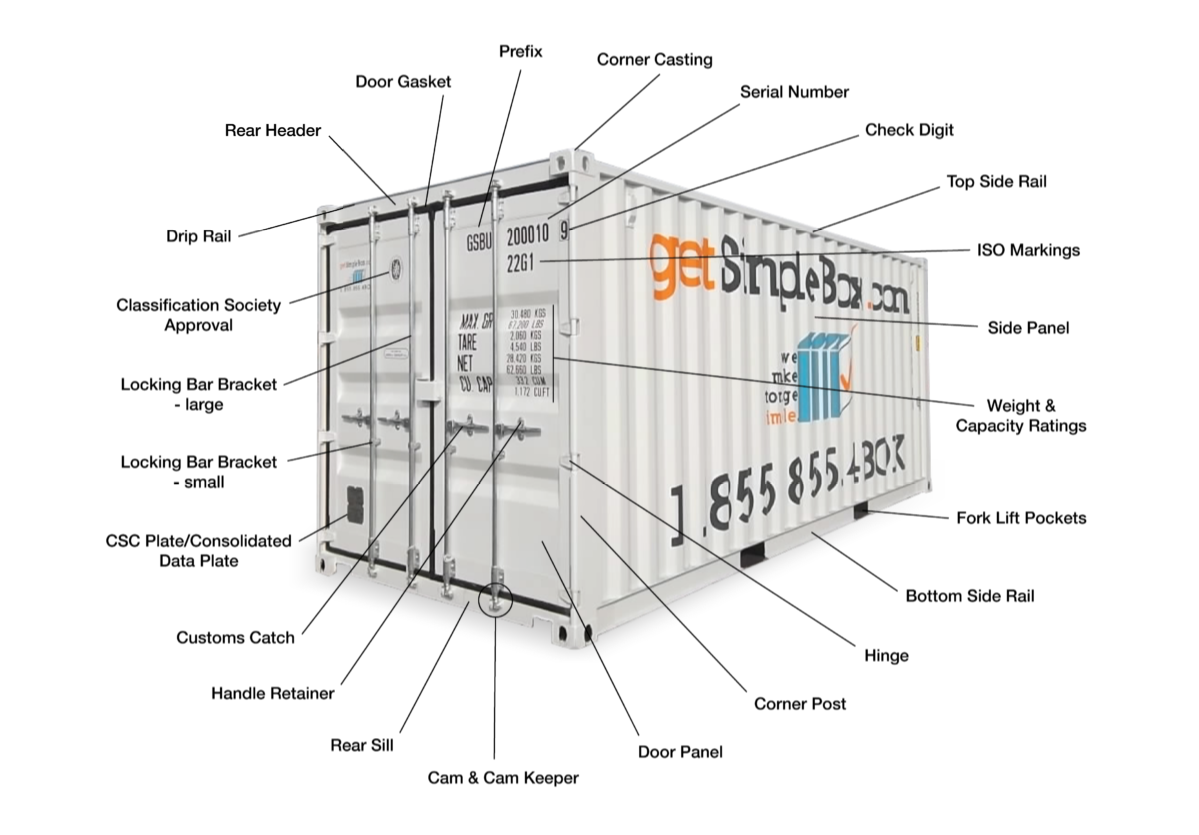How Big are Shipping containers?
| Dimensions | 20 foot Standard Container | 20 foot Double-Door Container | 20 foot High Cube Container | 40 foot Standard Container | 40 foot Double Door Container | 40 foot High Cube Container |
|---|---|---|---|---|---|---|
| External Length | 20′ | 20′ | 20′ | 40′ | 40′ | 40′ |
| External Width | 8′ | 8′ | 8′ | 8′ | 8′ | 8′ |
| External Height | 8′-6″ | 8′-6″ | 9′-6″ | 8′-6″ | 8′-6″ | 9′-6″ |
| Door Opening Width | 7′-7″ | 7′-7″ | 7′-7″ | 7′-7″ | 7′-7″ | 7′-7″ |
| Door Opening Height | 7′-4″ | 7′-4″ | 8′-4″ | 7′-4″ | 7′-4″ | 8′-4″ |
| Interior Length | 19′-5″ | 19′-5″ | 19′-5″ | 39′-5″ | 39′-5″ | 39′-5″ |
| Interior Width | 7′-8″ | 7′-8″ | 7′-8″ | 7′-8″ | 7′-8″ | 7′-8″ |
| Interior Height | 7′-10″ | 7′-10″ | 8′-10″ | 7′-10″ | 7′-10″ | 8′-10″ |
| Weight | 4,900 lbs. | 5,200 lbs. | 5,300 lbs. | 8,200 lbs. | 8,500 lbs. | 8,750 lbs. |

Where did Conex Boxes come from and what are they made of?
The CONEX box was a type of cargo container developed during the Korean War that was used to transport and store supplies during the Korean and Vietnam wars. It was reinvented by Malcom McLean to form the standard Intermodal shipping container that is used widely by container shipping companies today. – Wikipedia
Steel Construction
Most Intermodal Containers are made of Corten Steel or weathering steel is designed to help scrapes, dings and dents better endure the weather by forming a “protective” layer of hard rust on your conex box.
Conex boxes have corrugated walls to make them stronger. The corrugation in the 14-gauge steel walls give the container stacking strength and some can be stacked and fully-loaded up to 8 stories high.
Shipping Container flooring will vary, most new conex boxes have an inch and a quarter plywood or bamboo floor. Newer conex boxes are built with more environmentally friendly sustainable resources. Some older conex boxes have a combination of marine-grade plywood and steel flooring.
The cargo doors and door seal open the full-width of the conex box, which provides a large opening on one end of the container. The thick rubber gasket that seals both cargo doors tightly, and keeps the weather out. Conex boxes being used for storage at your home or place of business, that door seal helps prevent rodents and bugs from entering your conex box.
CSC Plate refers to the International Convention for Safe Containers. This is the international agreement for maintaining containers in safe condition. The CSC Plate is usually on the left-hand cargo door of the container. A cargo-worthy container that has been surveyed and re-certified will receive a stamp or label to place on the CSC plate, signifying the time the certification will be valid for.

How to identify a shipping container


